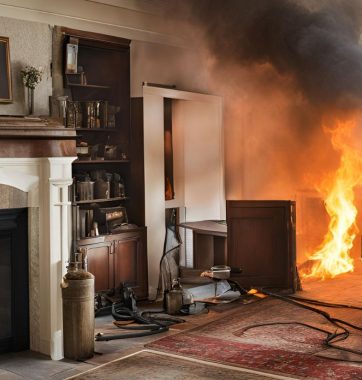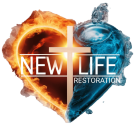
A Comprehensive Guide
Experiencing a house fire is overwhelming and devastating, leaving homeowners uncertain about the next steps. Ensuring safety, securing your property, and beginning the restoration process as soon as possible is crucial. This guide outlines the most important steps to take immediately after a house fire to help you recover quickly and efficiently.
1. Prioritize Safety First
A. Wait for Clearance from Authorities
- Do not re-enter your home until the fire department declares it safe.
- Structural damage, smoldering embers, and gas leaks can pose serious hazards.
- Follow the guidance of firefighters and local emergency responders.
B. Seek Medical Attention
- Even if you feel fine, smoke inhalation and burns can cause delayed health effects.
- If anyone in your household experiences breathing difficulties, burns, or shock, seek immediate medical care.
C. Watch for Hidden Dangers
- Be cautious of unstable ceilings, walls, and floors.
- Avoid touching charred furniture, appliances, or electrical systems, as they may still be hazardous.
2. Contact Your Insurance Company
A. Initiate the Claims Process
- Call your home insurance provider as soon as possible to report the fire.
- Provide details about the extent of damage and any temporary living arrangements needed.
B. Request an Adjuster Inspection
- Your insurance company will send an adjuster to assess the damage and determine coverage.
- Keep records of everything discussed with your insurer, including claim numbers and representative contacts.
C. Secure Temporary Housing
- If your home is unlivable, ask your insurance provider about coverage for hotel stays or rental properties.
- Organizations like the Red Cross and local shelters can also provide assistance.
3. Secure Your Property
A. Prevent Further Damage
- If safe to do so, board up broken windows and doors to deter trespassers and further exposure to the elements.
- If your roof is damaged, use a tarp to prevent water intrusion.
B. Shut Off Utilities
- Contact your utility providers to shut off gas, electricity, and water to prevent leaks and further risks.
- Do not attempt to restore utilities yourself—wait for professional inspection.
4. Document the Damage
A. Take Photos and Videos
- Capture detailed images of burned, smoke-damaged, and water-damaged areas.
- Document personal belongings, structural issues, and appliance damage for your insurance claim.
B. Create an Inventory List
- Write down everything lost or damaged in the fire.
- Note the approximate value and purchase date for larger items.
- Save receipts and documents for proof of ownership if available.
5. Begin the Cleanup Process
A. Hire a Professional Fire Damage Restoration Company
- Companies like New Life Restoration Services specialize in smoke, soot, and fire damage cleanup.
- They use advanced techniques to remove hazardous debris, eliminate smoke odors, and restore salvageable items.
B. Remove Smoke and Soot
- Smoke residue is toxic and can continue damaging surfaces over time.
- Professionals will clean walls, ceilings, and furniture using specialized cleaning agents.
C. Address Water Damage
- Firefighting efforts often leave water-soaked floors and walls, leading to mold growth.
- Dry affected areas quickly with industrial fans and dehumidifiers.
6. Recover Important Documents and Items
A. Salvage What You Can
- Check for fireproof safes or secure storage where important documents may have survived.
- Retrieve photo albums, heirlooms, and valuables if safe to do so.
B. Replace Lost Documents
- Contact relevant agencies to replace:
- Driver’s license and Social Security card (DMV and SSA office)
- Birth certificates and passports (local government offices)
- Financial records, credit cards, and insurance policies (banks and insurers)
7. Seek Support and Assistance
A. Reach Out for Emotional Support
- Coping with a fire is emotionally overwhelming—seek support from family, friends, or counselors.
- Local disaster relief organizations provide resources and guidance.
B. Apply for Aid
- The American Red Cross, FEMA, and local charities offer financial and housing assistance.
- Your community and church organizations may also provide relief efforts.
8. Rebuild and Restore
A. Hire Trusted Contractors
- Work with licensed and insured restoration professionals to rebuild your home.
- New Life Restoration Services ensures a safe, high-quality restoration process.
B. Upgrade Fire Safety Measures
- Install smoke detectors, fire extinguishers, and sprinkler systems.
- Create a family fire escape plan to prepare for future emergencies.
Conclusion
Recovering from a house fire is challenging, but by taking the right steps—ensuring safety, documenting damage, and beginning the restoration process—you can rebuild and move forward. Trust New Life Restoration Services to help you through every stage of recovery, ensuring your home is restored safely and efficiently.
